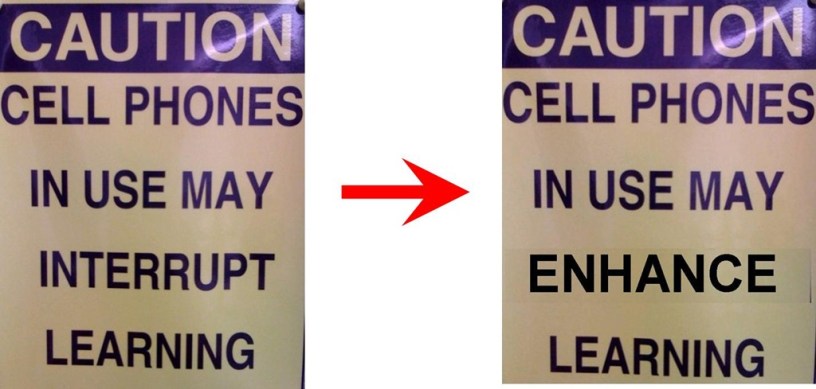Are smartphones in classrooms a smart idea? It’s a good question, and one we’ve covered a few times before. In 2010, I touched on the National Education Technology Plan, which among other things involved implementing policies that “enable leveraging the technology that students already have.” Smartphones can, after all, be used as powerful informational research tools, not to mention e-readers for the government’s new Open eBooks program. (Potentially very cheap e-readers, given that some of the lowest low-end devices will work with the Open eBooks app.)
But at the same time, that doesn’t automatically make them a good idea—but try telling that to folks like The Media Show puppeteers. They ran across Internet search results suggesting that people think cell phones in classrooms are bad, and it got their dander up:
My gut reactions to the question “How do cell phones distract students?” were, “well, what are they doing on their phones? How do we know it’s bad? What if they’re actually doing something worthwhile, and by taking away their phones we’re wasting their time?”
So they put up some handy straw men to knock down with this video depicting a bunch of kids who just want to use their smartphones to learn about stuff, but an evil teacher gets in the way making them do boring stuff.
And yeah, that’s a great depiction if you’re looking to be pro-phone—but as the article’s discussion on the BoingBoing BBS points out, anyone who’s spent time around real kids (not puppet ones) will tell you that it’s generally an unrealistic one. As with many office workers with Internet access, you’re more likely to catch kids with unrestricted smartphones texting each other, playing games, noodling on social media, browsing random web sites, viewing porn, or otherwise wasting time. Other kids have trouble figuring out how to use the digital tools at all.
That being said, the myriad of schools out there using digital technology show that smartphones and tablets can be put to good use in the classroom, but it takes a teacher who knows what they’re doing and is focused on helping kids find educational activity interesting. You can’t just assume that kids are randomly going to be interested in educating themselves, rather than goofing off. I know darned well I would have goofed off at that age, because I did already without even having technology to enable it.
One problem with digital devices is that it’s hard to look over kids’ shoulders to make sure they’re doing what they’re supposed to be doing when the screens are so small. And unless the school issues the devices, they’re not going to have control over what’s in or on them. And a lot fewer kids are going to be Little Angels than one would hope.
So, yes, there is a place for digital devices in the class room, but it’s not quite as simplistic as this video makes it look. Still, it’s good that there are pieces like this out there to inspire that sort of discussion.


Schools inevitably wind up tossing the baby with the bathwater. They’ve been trying to control technology ever since the first hand held calculator came on scene. I have seen computer labs so hobbled that they are useless for anything beyond drill and practice – sometimes called “drill and kill.”
With mobile devices, the preference is for school-issued gear that can be tied to a controlled, managed network. The cost of that is daunting so we entertain BYOD schemes. The problem with BYOD is that control goes out the window. Enforcement of best digital practices is an illusion.
The solution is to develop effective alternatives to enforcement. Unfortunately, few educators believe in the efficacy of moral suasion. They have always relied on enforcement.
LikeLike
@Frank: I very much agree with your belief in “the efficacy of moral suasion.” That is so much of what the cell phone book club concept is about–but not all. The real fix is to get people excited about all the useful and interesting things that their cell phones can help them accomplish, while advancing their personal goals, including the school-related ones.
LikeLike
As a teacher I can tell you that many students will use laptops and phones appropriately. A few will not. If you’re willing to be diligent and patrol the room a bit while teaching you can let them use it.
The #1 texting distraction doesn’t usually come from their friends but from their parents. My students usually confine their phone usage to before class starts.
Anyway the “phones are a valuable tool” argument is invalid. They can use their phones, tablets and laptops when studying and doing homework. That is when it can be a useful tool. When seeing the material for the first time in class they should be taking lecture notes and engaging in the class discussions.
LikeLike